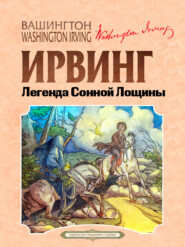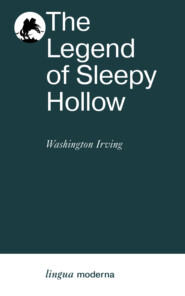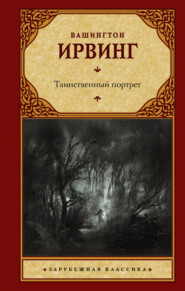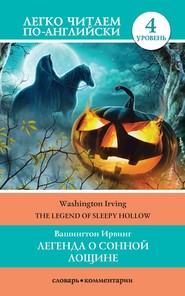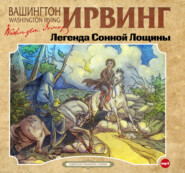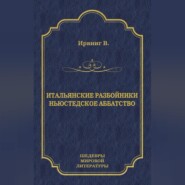По всем вопросам обращайтесь на: info@litportal.ru
(©) 2003-2025.
✖
Spanish Papers
Настройки чтения
Размер шрифта
Высота строк
Поля
Volumes would it take to follow the Count Fernan Gonzalez in his heroic achievements against the infidels, – achievements which give to sober history almost the air of fable. I forbear to dwell at large upon one of his campaigns, wherein he scoured the Valley of Laguna; passed victoriously along the banks of the Douro, building towers and castles to keep the country in subjection; how he scaled the walls of the castle of Ormaz, being the first to mount, sword in hand; how by the valor of his arm he captured the city of Orma; how he took the town of Sandoval, the origin of the cavaliers of Sandoval, who were anciently called Salvadores; how he made an inroad even to Madrid, then a strongly fortified village, and having taken and sacked it, returned in triumph to Burgos.
But it would be wronging the memory of this great and good cavalier to pass in silence over one of his exploits in which he gave a singular instance of his piety. This was in an expedition against the ancient city of Sylo. It was not a place of much value in itself, being situated in a cold and sterile country, but it had become a stronghold of the Moors, whence they carried on their warfare. This place the count carried by assault, entering it in full armor, on his steed, overturning and slaying all who opposed him. In the fury of his career he rode into a spacious edifice which he supposed to be a mosque, with the pious intention of slaying every infidel he might find within. On looking round, however, great was his astonishment at beholding images of saints, the blessed cross of our Saviour, and various other sacred objects, which announced a church devoted to the veritable faith. Struck with remorse, he sprang from his horse, threw himself upon his knees, and with many tears implored pardon of God for the sin he had unknowingly committed. While he was yet on his knees, several monks of the order of St. Dominic approached, meagre in looks and squalid in attire, but hailing him with great joy as their deliverer. In sooth this was a convent of San Sebastian, the fraternity of which had remained captives among the Moors, supporting themselves poorly by making baskets, but permitted to continue in the exercise of their religion.
Still filled with pious compunction for the trespass he had made, the count ordered that the shoes should be taken from his horse and nailed upon the door of the church; for never, said he, shall they tread any other ground after having trodden this holy place. From that day, we are told, it has been the custom to nail the shoes of horses on the portal of that convent – a custom which has extended to many other places.
The worthy Fray Prudencio de Sandoval records a marvelous memento of the expedition of the count against this city, which remained, he says, until his day. Not far from the place, on the road which passes by Lara, is to be seen the print of his horse’s hoofs in a solid rock, which has received the impression as though it had been made in softened wax.[68 - Sandoval, p. 313.] It is to be presumed that the horse’s hoofs had been gifted with miraculous hardness in reward to the count for his pious oblation of the shoes.
CHAPTER XIV
Of the Moorish Host that came up from Cordova, and how the Count repaired to the Hermitage of San Pedro, and prayed for Success against them, and received Assurance of Victory in a Vision. – Battle of Hazinas.
The worthy Fray Antonio Agapida, from whose manuscripts this memoir is extracted, passes by many of the striking and heroic deeds of the count, which crowd the pages of ancient chroniclers; but the good friar ever is sure to dwell with delight upon any of those miraculous occurrences which took place in Spain in those days, and which showed the marked interposition of Heaven in behalf of the Christian warriors in their battles with the infidels. Such was the renowned battle of Hazinas, which, says Agapida, for its miraculous events is worthy of eternal blazon.
Now so it was that the Moorish king of Cordova had summoned all the faithful, both of Spain and Africa, to assist him in recovering the lands wrested from him by the unbelievers, and especially by Count Fernan Gonzalez in his late victories; and such countless legions of turbaned warriors were assembled that it was said they covered the plains of Andalusia like swarms of locusts.
Hearing of their threatening approach, the count gathered together his forces at Piedrafita, while the Moors encamped in Hazinas. When, however, he beheld the mighty host arrayed against him, his heart for once was troubled with evil forebodings, and calling to mind the cheering prognostications of the friar Pelayo on a like occasion, he resolved to repair again to that holy man for counsel. Leaving his camp, therefore, secretly, he set out, accompanied by two cavaliers, to seek the chapel which he had ordered to be built at the hermitage of San Pedro, on the mountain overhanging the river Arlanza, but when arrived there he heard to his great grief that the worthy friar was dead.
Entering the chapel, however, he knelt down at the altar and prayed for success in the coming fight; humbly representing that he had never, like many of the kings and nobles of Spain, done homage to the infidels and acknowledged them for sovereigns. The count remained a long time at prayer, until sleep gradually stole over him; and as he lay slumbering before the altar the holy Fray Pelayo appeared before him in a vision, clad in garments as white as snow. “Why sleepest thou, Fernan Gonzalez?” said he; “arise, and go forth, and know that thou shalt conquer those Moors. For, inasmuch as thou art a faithful vassal of the Most High, he has commanded the Apostle San Iago and myself, with many angels, to come to thy aid, and we will appear in the battle clad in white armor, with each of us a red cross upon our pennon. Therefore arise, I say, and go hence with a valiant heart.”
The count awoke, and while he was yet musing upon the vision he heard a voice saying, “Arise, and get thee hence; why dost thou linger? Separate thy host into three divisions: enter the field of battle by the east, with the smallest division, and I will be with thee; and let the second division enter by the west, and that shall be aided by San Iago; and let the third division enter by the north. Know that I am San Millan who come to thee with this message.”
The count departed joyfully from the chapel, and returned to his army; and when he told his troops of this, his second visit to the hermitage, and of the vision he had had, and how the holy friar San Pelayo had again assured him of victory, their hearts were lifted up, and they rejoiced to serve under a leader who had such excellent counselors in war.
In the evening preceding the battle Don Fernan Gonzalez divided his forces as he had been ordered. The first division was composed of two hundred horsemen and six thousand infantry; hardy mountaineers, light of foot and of great valor. In the advance were Don Gustios Gonzalez of Salas, and his seven sons and two nephews, and his brother Ruy Velasquez, and a valiant cavalier named Gonzalo Diaz.
The second division was led by Don Lope de Biscaya, with the people of Burueba and Trevino, and Old Castile and Castro and the Asturias. Two hundred horsemen and six thousand infantry.
The third division was led by the count himself, and with him went Ruy Cavia, and Nuño Cavia and the Velascos, whom the count that day dubbed knights, and twenty esquires of the count, whom he had likewise knighted. His division consisted of four hundred and fifty horse and fifteen hundred foot; and he told his men that if they should not conquer the Moors on the following day, they should draw off from the battle when he gave the word. Late at night, when all the camp, excepting the sentinels and guards, were buried in sleep, a light suddenly illumined the heavens, and a great serpent was seen in the air, wounded and covered with blood, and vomiting flames, and making a loud hissing that awakened all the soldiers. They rushed out of their tents, and ran hither and thither, running against each other in their affright. Count Fernan Gonzalez was awakened by their outcries, but before he came forth the serpent had disappeared. He rebuked the terrors of his people, representing to them that the Moors were great necromancers, and by their arts could raise devils to their aid; and that some Moorish astrologer had doubtless raised this spectrum to alarm them; but he bade them be of good heart, since they had San Iago on their side, and might set Moor, astrologer, and devil at defiance.
In the first day’s fight Don Fernan fought hand to hand with a powerful Moor, who had desired to try his prowess with him. It was an obstinate contest, in which the Moor was slain; but the count so badly wounded that he fell to the earth, and had not his men surrounded and defended him, he would have been slain or captured. The battle lasted all day long, and Gustios Gonzalez and his kindred warriors showed prodigies of valor. Don Fernan, having had his wounds stanched, remounted his horse and galloped about, giving courage to his men; but he was covered with dust and blood, and so hoarse that he could no longer be heard. The sun went down, the Moors kept on fighting, confiding in their great numbers. The count, seeing the night approaching, ordered the trumpets to be sounded, and, collecting his troops, made one general charge on the Moors, and drove them from the field. He then drew off his men to their tents, where the weary troops found refreshment and repose, though they slept all night upon their arms.
On the second day the count rose before the dawn, and having attended mass like a good Christian, attended next to his horses, like a good cavalier, seeing with his own eyes that they were well fed and groomed, and prepared for the field. The battle this day was obstinate as the day before, with great valor and loss on either side.
On the third day the count led forth his forces at an early hour, raising his silver standard of the cross, and praying devoutly for aid. Then lowering their lances, the Castilians shouted San Iago! San Iago! and rushed to the attack.
Don Gustios Gonzalo de Salas, the leader of one of the divisions, made a lane into the centre of the Moorish host, dealing death on either side. He was met by a Moorish cavalier of powerful frame. Covering themselves with their shields, they attacked each other with great fury; but the days of Gustios Gonzalo were numbered, and the Moor slew him, and with him fell a nephew of Count Fernan, and many of his principal cavaliers.
Count Fernan Gonzalez encountered the Moor who had just slain his friend. The infidel would have avoided him, having heard that never man escaped alive from a conflict with him; but the count gave him a furious thrust with his lance, which stretched him dead upon the field.
The Moors, however, continued to press the count sorely, and their numbers threatened to overwhelm him. Then he put up a prayer for the aid promised in his vision, and of a sudden the Apostle San Iago appeared, with a great and shining company of angels in white, bearing the device of a red cross, and all rushing upon the Moors. The Moors were dismayed at the sight of this reinforcement to the enemy. The Christians, on the other hand, recovered their forces, knowing the Apostle San Iago to be at hand. They charged the Moors with new vigor, and put them to flight, and pursued them for two days, killing and making captive. They then returned and gathered together the bodies of the Christians who had been slain, and buried them in the chapel of San Pedro of Arlanza and in other hermitages. The bodies of the Moors were piled up and covered with earth, forming a mound which is still to be seen on the field of battle.
Some have ascribed to the signal worn in this battle by the celestial warriors the origin of the Cross of Calatrava.
CHAPTER XV
The Count imprisoned by the King of Leon. – The Countess concerts his Escape. – Leon and Castile united by the Marriage of the Prince Ordoño with Urraca, the Daughter of the Count by his first Wife.
Not long after this most renowned and marvelous battle, a Moorish captain named Aceyfa became a vassal of the Count Don Fernan. Under his protection, and that of a rich and powerful Castilian cavalier named Diego Muñon, he rebuilt Salamanca and Ledesma, and several places on the river Tormes, which had been desolated and deserted in times past.
Ramiro the Second, who was at this time King of Leon, was alarmed at seeing a strong line of Moorish fortresses erected along the borders of his territories, and took the field with an army to drive the Moor Aceyfa from the land. The proud spirit of Count Fernan Gonzalez was aroused at this attack upon his Moorish vassal, which he considered an indignity offered to himself; so being seconded by Don Diego Muñon, he marched forth with his chivalry to protect the Moor. In the present instance he had trusted to his own head, and had neglected to seek advice of saint or hermit; so his army was defeated by King Ramiro, and himself and Don Diego Muñon taken prisoner. The latter was sent in chains to the castle of Gordon; but the count was carried to Leon, where he was confined in a tower of the wall, which to this day is pointed out as his prison.[69 - In the Cronica General de España, this imprisonment is said to have been by King Sancho the Fat; but the cautious Agapida goes according to his favorite Sandoval in attributing it to King Ramiro, and in so doing he is supported by the Chronicle of Bleda, L. 3, c. 19.]
All Castile was thrown into grief and consternation by this event, and lamentations were heard throughout the land, as though the count had been dead. The countess, however, did not waste time in idle tears, for she was a lady of most valiant spirit. She forthwith assembled five hundred cavaliers, chosen men of tried loyalty and devotion to the count. They met in the chapel of the palace, and took an oath upon the Holy Evangelists to follow the countess through all difficulties and dangers, and to obey implicitly all her commands for the rescue of their lord. With this band the countess departed secretly at nightfall, and travelled rapidly until morning, when they left the roads, and took to the mountains, lest their march should be discovered. Arrived near to Leon, she halted her band in a thick wood in the mountain of Samosa where she ordered them to remain in secrecy. Then clothing herself as a pilgrim with her staff and pannier, she sent word to King Ramiro that she was on a pilgrimage to San Iago, and entreated that she might have permission to visit her husband in his prison. King Ramiro not merely granted her request, but sallied forth above a league from the city with a great retinue to do her honor. So the countess entered a second time the prison where the count lay in chains, and stood before him as his protecting angel. At sight of him in this miserable and dishonored state, however, the valor of spirit which had hitherto sustained her gave way, and tears flowed from her eyes. The count received her joyfully, and reproached her with her tears; “for it becomes us,” said he, “to submit to what is imposed upon us by God.”
The countess now sent to entreat the king that while she remained with the count his chains should be taken off. The king again granted her request; and the count was freed from his irons and an excellent bed prepared in his prison.
The countess remained with him all night and concerted his escape. Before it was daylight she gave him her pilgrim’s dress and staff, and the count went forth from the chamber disguised as his wife. The porter at the outer portal, thinking it to be the countess, would have waited for orders from the king; but the count, in a feigned voice, entreated not to be detained, lest he should not be able to perform his pilgrimage. The porter, mistrusting no deceit, opened the door. The count issued forth, repaired to a place pointed out by the countess, where the two cavaliers awaited him with a fleet horse. They all sallied quietly forth from the city at the opening of the gates, until they found themselves clear of the walls, when they put spurs to their horses and made their way to the mountain of Samosa. Here the count was received with shouts of joy by the cavaliers whom the countess had left there in concealment.
As the day advanced the keeper of the prison entered the apartment of Don Fernan, but was astonished to find there the beautiful countess in place of her warrior husband. He conducted her before the king, accusing her of the fraud by which she had effected the escape of the count. King Ramiro was greatly incensed, and he demanded of the countess how she dared to do such an act. “I dared,” replied she, “because I saw my husband in misery, and felt it my duty to relieve him; and I dared because I was the daughter of a king, and the wife of a distinguished cavalier; as such I trust to your chivalry to treat me.”
The king was charmed with her intrepidity. “Señora,” said he, “you have acted well and like a noble lady, and it will redound to your laud and honor.” So he commanded that she should be conducted to her husband in a manner befitting a lady of high and noble rank; and the count was overjoyed to receive her in safety, and they returned to their dominions and entered Burgos at the head of their train of cavaliers, amidst the transports and acclamations of their people. And King Ramiro sought the amity of Count Fernan Gonzalez, and proposed that they should unite their houses by some matrimonial alliance which should serve as a bond of mutual security. The count gladly listened to his proposals. He had a fair daughter named Urraca, by his first wife, who was now arrived at a marriageable age; so it was agreed that nuptials should be solemnized between her and the Prince Ordoño, son of King Ramiro; and all Leon and Castile rejoiced at this union, which promised tranquillity to the land.
CHAPTER XVI
Moorish Incursion into Castile. – Battle of San Estevan. – Of Pascual Vivas and the Miracle that Befell him. – Death of Ordoño III.
For several succeeding years of the career of this most redoubtable cavalier, the most edifying and praiseworthy traces which remain, says Fray Antonio Agapida, are to be found in the archives of various monasteries, consisting of memorials of pious gifts and endowments made by himself and his countess, Doña Sancha.
In the process of time King Ramiro died, and was succeeded by his son Ordoño III., the same who had married Urraca, the daughter of Count Fernan. He was surnamed the Fierce, either from his savage temper or savage aspect. He had a step-brother named Don Sancho, nephew, by the mother’s side, of King Garcia of Navarre, surnamed the Trembler. This Don Sancho rose in arms against Ordoño at the very outset of his reign, seeking to deprive him of his crown. He applied for assistance to his uncle Garcia and to Count Fernan Gonzalez, and it is said both favored his pretensions. Nay, the count soon appeared in the field in company with King Garcia the Trembler, in support of Prince Sancho. It may seem strange that he should take up arms against his own son-in-law; and so it certainly appeared to Ordoño III., for he was so incensed against the count that he repudiated his wife Urraca and sent her back to her father, telling him that since he would not acknowledge him as king, he should not have him for son-in-law.
The kingdom now became a prey to civil wars; the restless part of the subjects of King Ordoño rose in rebellion, and everything was in confusion. King Ordoño succeeded, however, in quelling the rebellion, and defended himself so ably against King Garcia and Count Fernan Gonzalez, that they returned home without effecting their object.
About this time, say the records of Compostella, the sinful dissensions of the Christians brought on them a visible and awful scourge from Heaven. A great flame, or, as it were, a cloud of fire, passed throughout the land, burning towns, destroying men and beasts, and spreading horror and devastation even over the sea. It passed over Zamora, consuming a great part of the place; it scorched Castro Xerez likewise, and Brebiesco and Pan Corvo in its progress, and in Burgos one hundred houses were consumed.
“These,” says the worthy Agapida, “were fiery tokens of the displeasure of Heaven at the sinful conduct of the Christians in warring upon each other, instead of joining their arms like brethren in the righteous endeavor to extirpate the vile sect of Mahomet.”
While the Christians were thus fighting among themselves, the Moors, taking advantage of their discord, came with a great army, and made an incursion into Castile as far as Burgos. King Ordoño and Count Fernan Gonzalez, alarmed at the common danger, came to a reconciliation, and took arms together against the Moors; though it does not appear that the king received again his repudiated wife Urraca. These confederate princes gave the Moors a great battle near to San Estevan. “This battle,” says Fray Antonio Agapida, “is chiefly memorable for a miracle which occurred there,” and which is recorded by the good friar with an unction and perfect credence worthy of a monkish chronicler.
The Christians were incastellated at San Estevan de Gormaz, which is near the banks of the Douro. The Moors had possession of the fortress of Gormaz, about a league further up the river on a lofty and rocky height.
The battle commenced at the dawn of day. Count Fernan Gonzalez, however, before taking the field, repaired with his principal cavaliers to the church, to attend the first morning’s mass. Now, at this time, there was in the service of the count a brave cavalier named Pascual Vivas, who was as pious as he was brave, and would pray with as much fervor and obstinacy as he would fight. This cavalier made it a religious rule with himself, or rather had made a solemn vow, that, whenever he entered a church in the morning, he would on no account leave it until all the masses were finished.
On the present occasion the firmness of this brave but pious cavalier was put to a severe proof. When the first mass was finished, the count and his cavaliers rose and sallied from the church in clanking armor, and soon after the sound of trumpet and quick tramp of steed told that they were off to the encounter. Pascual Vivas, however, remained kneeling all in armor before the altar, waiting, according to custom, until all the masses should be finished. The masses that morning were numerous, and hour after hour passed away; yet still the cavalier remained kneeling all in armor, with weapon in hand, yet so zealous in his devotion that he never turned his head.
All this while the esquire of the cavalier was at the door of the church, holding his war-horse, and the esquire beheld with surprise the count and his warriors depart, while his lord remained in the chapel; and, from the height on which the chapel stood, he could see the Christian host encounter the Moors at the ford of the river, and could hear the distant sound of trumpets and din of battle; and at the sound the war-horse pricked his ears and snuffed the air and pawed the earth, and showed all the eagerness of a noble steed to be among the armed men, but still Pascual Vivas came not out of the chapel. The esquire was wroth, and blushed for his lord, for he thought it was through cowardice and not piety that he remained in the chapel while his comrades were fighting in the field.
At length the masses were finished, and Pascual Vivas was about to sally forth when horsemen came riding up the hill with shouts of victory, for the battle was over and the Moors completely vanquished.
When Pascual Vivas heard this he was so troubled in mind that he dared not leave the chapel nor come into the presence of the count, for he said to himself, “Surely I shall be looked upon as a recreant knight, who have hidden myself in the hour of danger.” Shortly, however, came some of his fellow-cavaliers, summoning him to the presence of the count; and as he went with a beating heart, they lauded him for the valor he had displayed and the great services he had rendered, saying that to the prowess of his arm they owed the victory. The good knight, imagining they were scoffing at him, felt still more cast down in spirit, and entered the presence of the count covered with confusion. Here again he was received with praises and caresses, at which he was greatly astonished, but still thought it all done in mockery. When the truth came to be known, however, all present were filled with wonder, for it appeared as if this cavalier had been, at the same moment, in the chapel and in the field; for while he remained on his knees before the altar, with his steed pawing the earth at the door, a warrior exactly resembling him, with the same arms, device, and steed, had appeared in the hottest of the fight, penetrating and overthrowing whole squadrons of Moors; that he had cut his way to the standard of the enemy, killed the standard-bearer, and carried off the banner in triumph; that his pourpoint and coat of mail were cut to pieces, and his horse covered with wounds; yet still he fought on, and through his valor chiefly the victory was obtained.
What more moved astonishment was that for every wound received by the warrior and his steed in the field, there appeared marks on the pourpoint and coat of mail and upon the steed of Pascual Vivas, so that he had the semblance of having been in the severest press of the battle.
The matter was now readily explained by the worthy friars who followed the armies in those days, and who were skillful in expounding the miracles daily occurring in those holy wars. A miraculous intervention had been vouchsafed to Pascual Vivas. That his piety in remaining at his prayers might not put him to shame before sinful men, an angel bearing his form and semblance had taken his place in battle, and fought while he prayed.
The matter being thus explained, all present were filled with pious admiration, and Pascual Vivas, if he ceased to be extolled as a warrior, came near being canonized as a saint.[70 - Exactly the same kind of miracle is recorded as happening in the same place to a cavalier of the name of Don Fernan Antolenez, in the service of the Count Garcia Fernandez. Fray Antonio Agapida has no doubt that the same miracle did actually happen to both cavaliers; “for in those days,” says he, “there was such a demand for miracles that the same had frequently to be repeated;” witness the repeated appearance of Santiago in precisely the same manner, to save Christian armies from imminent danger of defeat, and achieve wonderful victories over the infidels, as we find recorded throughout the Spanish chronicles.]
King Ordoño III. did not long survive this battle. Scarce had he arrived at Zamora on his way homeward, when he was seized with a mortal malady of which he died. He was succeeded by his brother Don Sancho, the same who had formerly endeavored to dispossess him of his throne.
CHAPTER XVII






